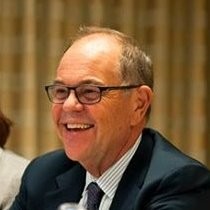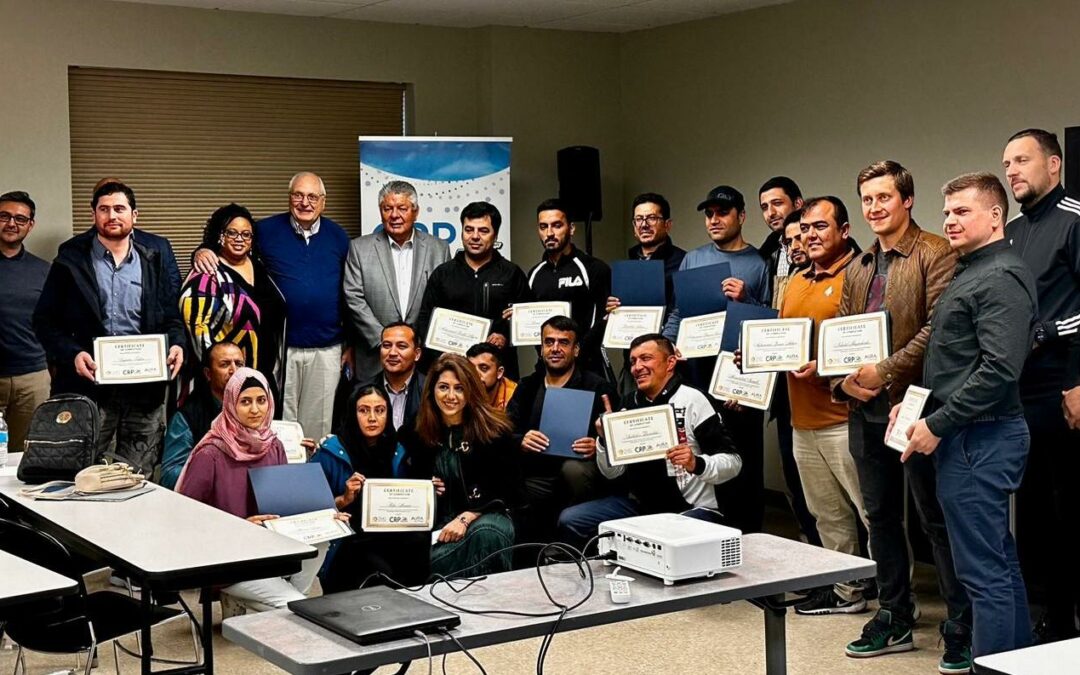With Earth Day coming up, we take a look at the journey of two veterans of the sustainability transition and what they see down the road as our next greatest challenges and opportunities.
 V. John White has been a champion for a cleaner Earth for more than a half-century. He has worked on changing policies—laws, rules, and regulations. In his view it has been a struggle and likely always will be. What got him started on this path?
V. John White has been a champion for a cleaner Earth for more than a half-century. He has worked on changing policies—laws, rules, and regulations. In his view it has been a struggle and likely always will be. What got him started on this path?
For him the trigger was growing up in the smog capital of California, Pasadena and then Riverside for college. Jimmy Buffett had it right—“I spent four lonely days in a brown LA haze”. John spent more than that. Riverside sat in a funnel that concentrated the smog as it blew east from LA. Stinging eyes, raspy throat—pretty awful. It’s much better now, in part because of activists like John. He ended up studying the science and politics of air pollution, getting a degree from UC Riverside. He joined the legislative staff of the California Assembly working for Jerry Lewis and in 1977 became the senior consultant to the Committee on Natural Resources, Land Use and Energy when Victor Calvo took over as Chairman when Charles Warren left to join the Carter Administration. In 1990, John joined the newly-formed Center for Energy Efficiency and Renewable Technologies (CEERT), where he serves as Executive Director to this day.
Leading CEERT, he has been in the front lines of advocacy for stronger clean energy laws and for more favorable treatment of clean energy at the CPUC. He says he is amazed at how much progress has been made in fifty years, but also amazed at how much of a struggle it has been. Now sustainability and fighting climate change seem firmly entrenched in state policy and more importantly in the mind of the public as good things to do.
Looking ahead, he sees challenges in creating the infrastructure to keep up with the need for clean energy. That is evident to him in the upgrading of the transmission system to accept more renewables and to serve a growing population of electric vehicles. He worries about the pace at which EV chargers are being added compared to meeting the state’s aggressive goals. Geothermal to him seems like a technology that unfortunately got left behind in the push for incentives on solar and wind, and that may change. He is also a nuclear advocate—but for fusion, not fission. He sees enough progress among a handful of private companies to be optimistic that fusion, particularly versions which do not create radioactive waste, will become a reality. No shortage of challenges and areas for improvement.
Chris White is a Senior Manager with Frontier Energy, where she helps clients accelerate the adoption of zero-emission vehicles, autonomous vehicles, and alternative fuels. Frontier Energy was formed in January 2017 with the merger of three entities that had been acquired by GTI (formerly called the Gas Technology Institute) through its subsidiary GTI International. One of those three was the Davis Energy Group, which was founded around 1980. With 140 employees worldwide, Frontier sees its mission as providing exceptional programs, services, and tools that encourage the intelligent use of energy. Frontier also manages the Hydrogen Fuel Cell Partnership in West Sacramento.
the adoption of zero-emission vehicles, autonomous vehicles, and alternative fuels. Frontier Energy was formed in January 2017 with the merger of three entities that had been acquired by GTI (formerly called the Gas Technology Institute) through its subsidiary GTI International. One of those three was the Davis Energy Group, which was founded around 1980. With 140 employees worldwide, Frontier sees its mission as providing exceptional programs, services, and tools that encourage the intelligent use of energy. Frontier also manages the Hydrogen Fuel Cell Partnership in West Sacramento.
Chris has a very different path that took her to an 18-year career in sustainability. She is much more attuned to working at a personal level, understanding what changes people’s behavior and being sensitive to the fact that many people live very different lives than the majority who focus on sustainability. She knows that people at the low end of the income scale are eager to stop harming the planet, but want to know how to do that while still meeting basic needs for food and shelter.
How do we not leave this population behind in our quest to address climate change and pollution? That could involve helping people stay in school, get job training, recover from addiction, and find a safe place to live. How does that intersect with sustainability? As an example, Project Home Key (run by the California Department of Housing and Community Development) and Project Room Key (at the California Department of Social Services) repurpose motels, hotels, abandoned buildings and other structures into living spaces for the homeless. How do we make those as energy efficient and low water use as possible—making them contributors to net zero carbon goals? There’s an angle many of us may not be thinking about—and a good business opportunity. A lot of funding is available for projects that incorporate these features. It is the motivation behind the Justice40 initiative from the White House (https://www.whitehouse.gov/environmentaljustice/justice40/. Justice40 made it a goal that 40 percent of the overall benefits of certain Federal investments flow to disadvantaged communities that are marginalized, underserved, and overburdened by pollution. This is an increasing theme in state programs as well.
Chris is also very concerned about how we bring the benefits of electric vehicles to overlooked communities that cannot afford them. For her, that could involve sharing vehicles and putting charging stations in convenient neighborhood locations.
Overall, Chris doesn’t think the climate activists are doing enough listening. They are focused on technology and not human beings. If there were more listening, she suspects it would lead to faster and better behavior change.
Reflecting on more than a decade of action since that first Earth Day, what can we do now? Both veterans see a lot of work ahead–and not easy work at that. It takes sustained effort. One thing you can do is to look for a non-profit organization to which you can make a donation. The stories here demonstrate that there are a wider range of possibilities than you might think. Pick one. Make a contribution to one you might not have thought of before. Widen the path for all. Keep the momentum of the past 53 years building. Progress on sustainability comes not just from elected leaders. It needs a bigger base. Help grow that base.






 V. John White has been a champion for a cleaner Earth for more than a half-century. He has worked on changing policies—laws, rules, and regulations. In his view it has been a struggle and likely always will be. What got him started on this path?
V. John White has been a champion for a cleaner Earth for more than a half-century. He has worked on changing policies—laws, rules, and regulations. In his view it has been a struggle and likely always will be. What got him started on this path?